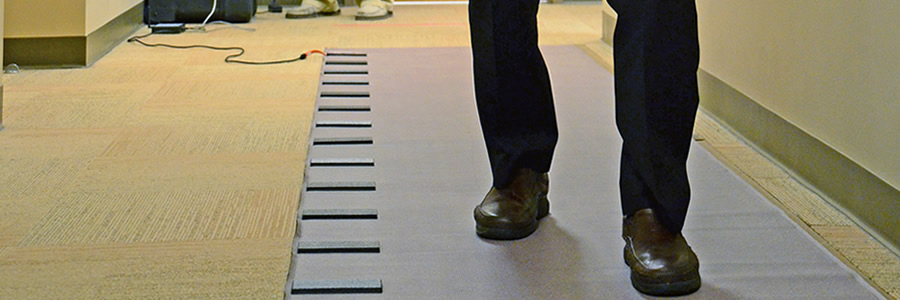What does the way you walk and talk say about how well your brain functions?

At Pennington Biomedical's Institute for Dementia Research & Prevention (IDRP), more than 2,400 people are now taking part in research focused on the latest prevention and treatment strategies for Alzheimer's disease and other age-related dementia.
As part of their yearly evaluation in the Louisiana Aging Brain Study and the Jo Lamar Dementia Study, many volunteers take a stroll down a calibrated 33-foot walking mat. Then, they repeat the exercise while performing mental tasks such as spelling a word backwards.
So, what does the way you walk tell researchers about brain health?
"When we compare normal and distracted gaits, we see that healthy individuals slow down when given a challenge," explains IDRP Director Jeffery Keller, Ph.D. "But, the central features of their gait remain unchanged, just slower."
Keller says, "For individuals who are starting to develop cognitive impairment—or possibly the earliest dementia—that slowing down is matched with irregularities in numerous aspects of their gait."
Everyday activities such as walking can remain normal as people age. But, Keller says, "We can distinguish healthy from unhealthy aging by looking at the fluctuations in gait when people are given a challenge."
In addition, "Increased falls and other potentially harmful events that happen to people developing dementia may be directly related to their ability to walk under conditions that most people would not find distracting," Keller notes.
The Hibernia National Bank/Edward G. Schleider endowed chair, Keller has led the IDRP since it was established in 2008.
Besides conducting one of the longest-running and largest brain aging studies in country, the IDRP provides access to cutting-edge clinical trials that involve both pharmaceutical and physical activity interventions. People from all over a tri-state area come to Pennington Biomedical's IDRP because it is the only Alzheimer's Disease Cooperative Study site between Houston and Birmingham, ranking it with other top-tier research facilities such as the Mayo Clinic and Yale.
While some of the IDRP studies require the sophisticated scans such as MRIs in Pennington Biomedical's Imaging Center and the use of other high-tech equipment, simply observing the act of walking and comparing data from year to year can also provide a wealth of information.
More than just serving as a barometer of brain health, Keller believes walking benefits the brain.
"Walking is really more than just a physical activity," Keller concludes. "It stimulates the brain in ways we do not understand. There's an aspect of walking and interacting with our environment as we walk that is critical to maintaining brain health."
If you'd like to learn more about how to participate in a study at Pennington Biomedical's Institute for Dementia Research and Prevention, visit http://idrp.pbrc.edu, call 225-763-2973 or e-mail dementia@pbrc.edu.
For more information on how you can support this and other projects at LSU’s Pennington Biomedical Research Center, visit www.pbrf.org.



